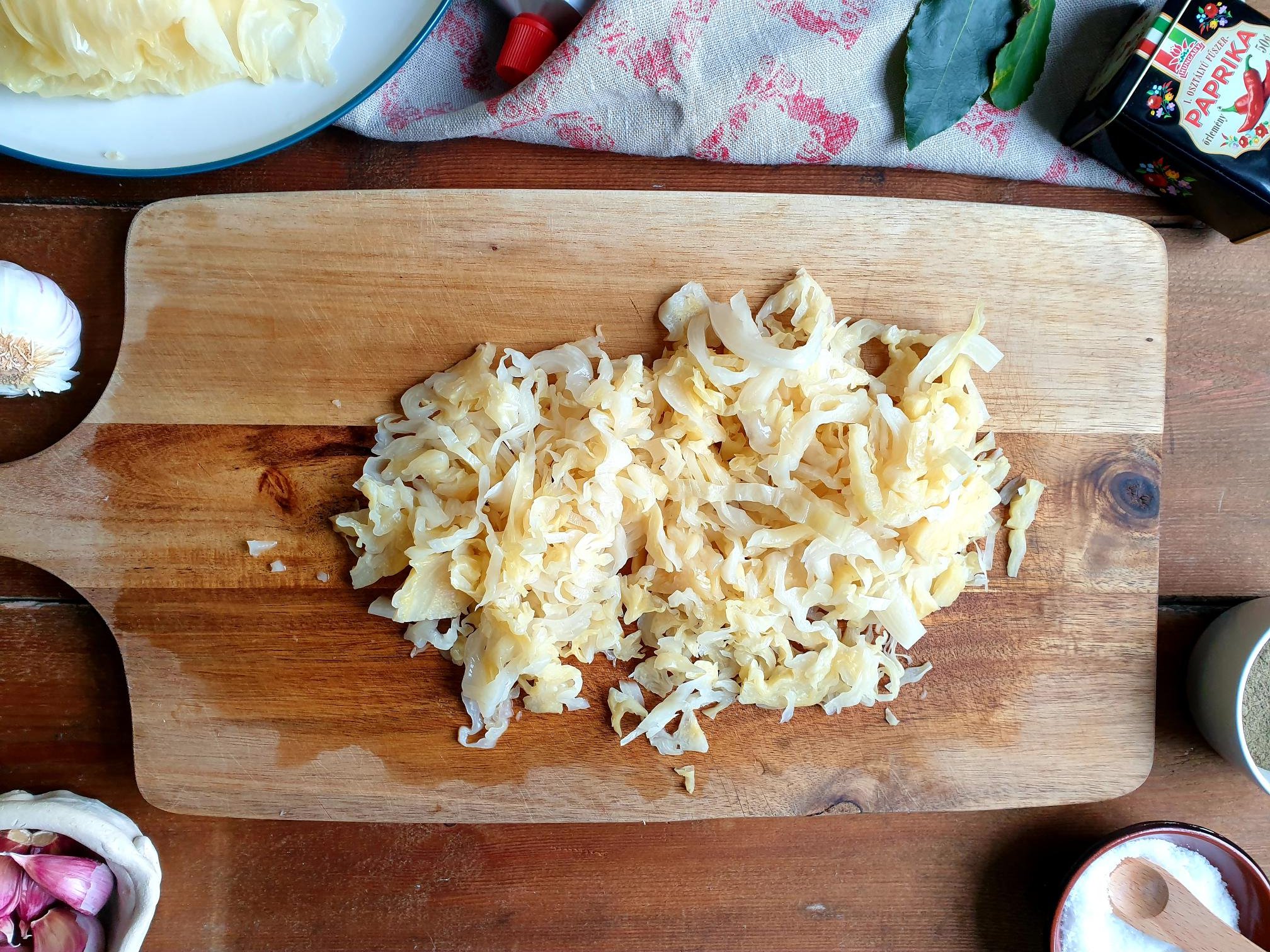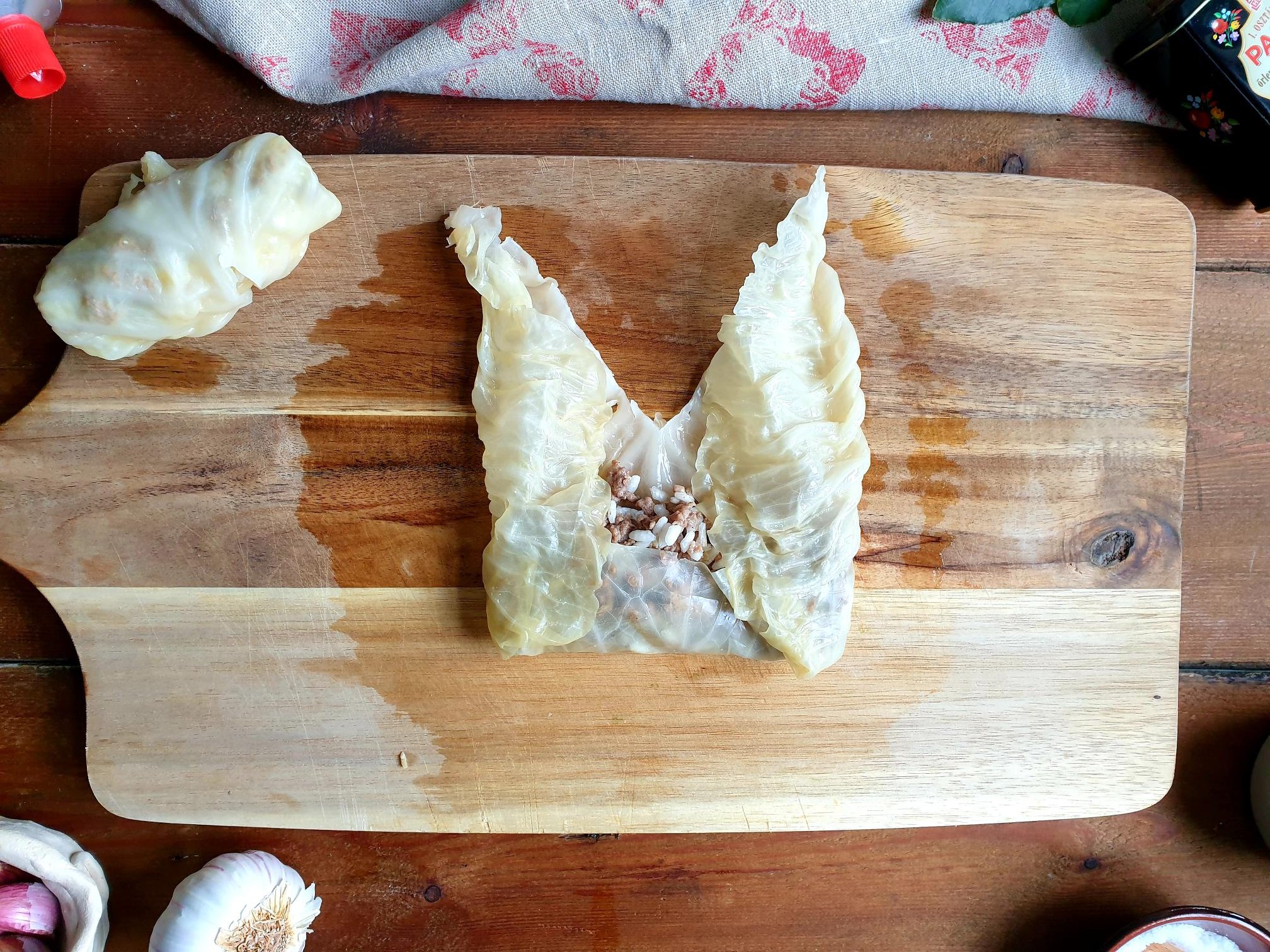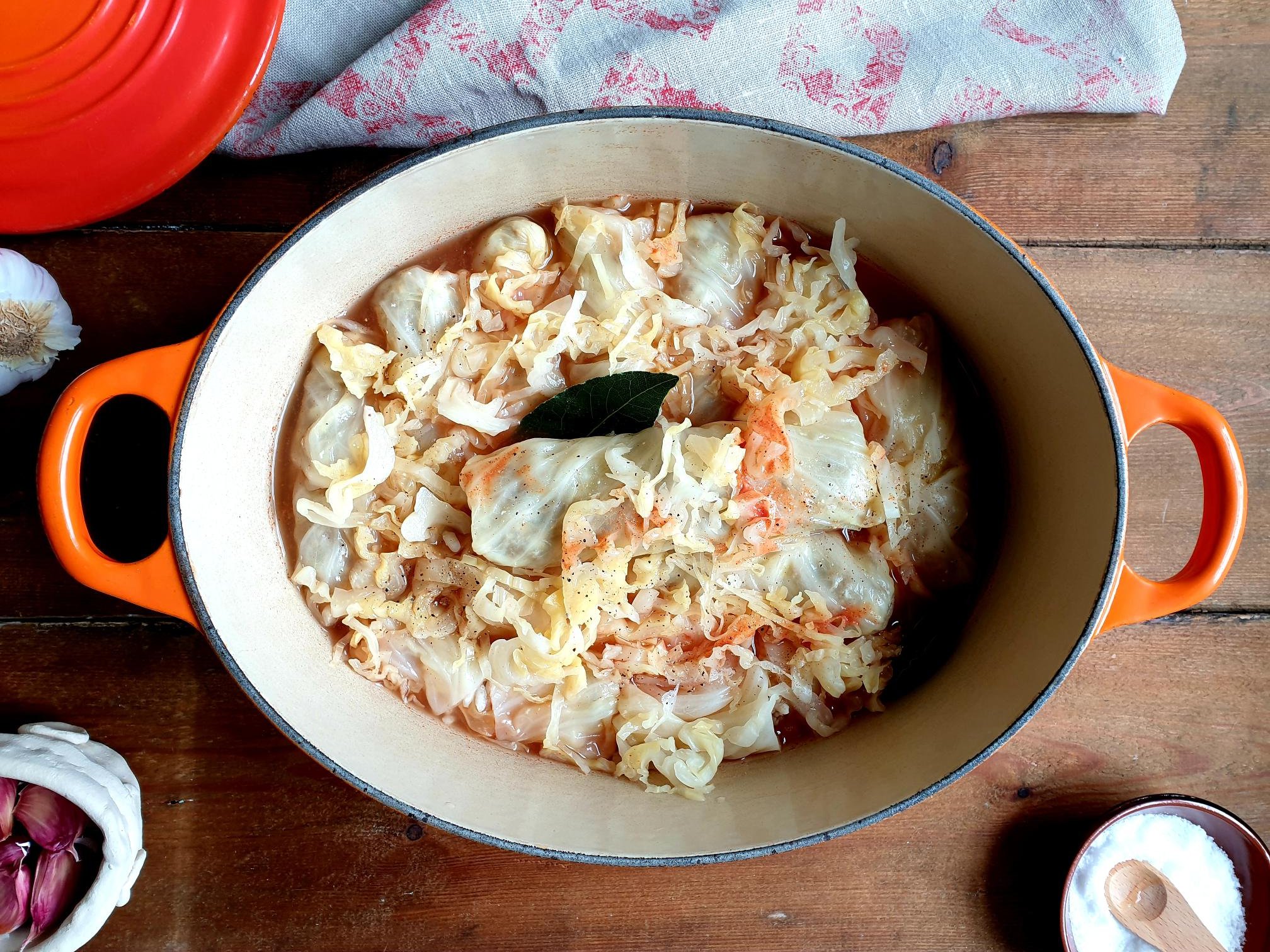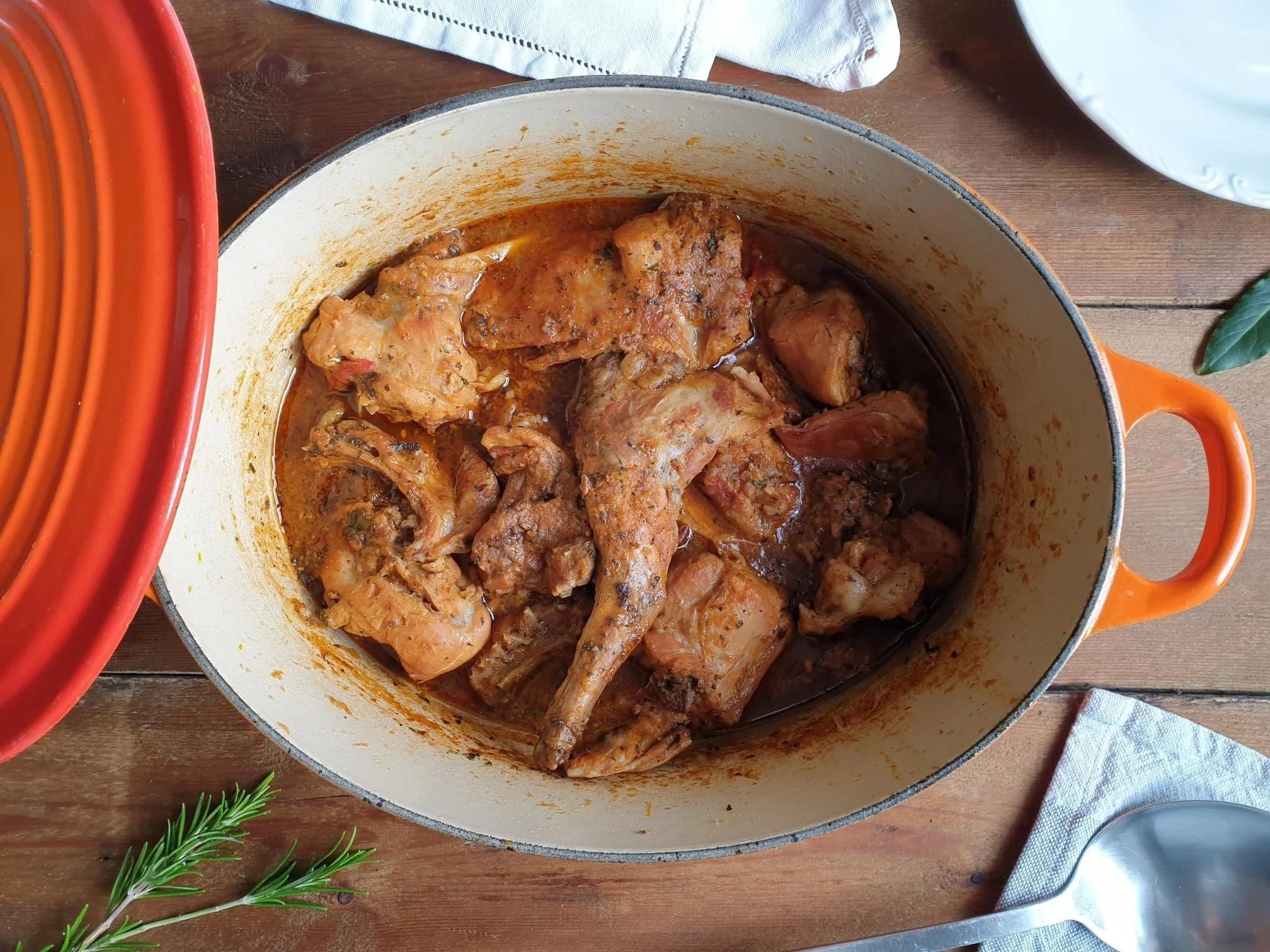Sarme - Pickled cabbage leaves stuffed with minced meat and rice in a light tomato sauce
Sarme, which is a plural form of sarma, but also holding the name of the dish, is made of a mixture of minced meat and white rice wrapped in pickled cabbage leaves, and then slow cooked on a bed of shredded sauerkraut in a light tomato sauce.
This dish takes a special place in my recipe collection for comfort food, it is easy to make, hearty and satisfying, especially popular during colder months, it will wrap you in warmth like a woollen blanket. It used to be commonly served for lunch or dinner during the holidays and special occasions but nowadays it is also eaten as midweek meal.
Taking into account the historical context, it is quite clear, that Sarma probably originated in Turkey (the name sarma derives from a Turkish word sarmak, meaning to roll) and belongs to the dolma food family (stuffed dishes) spread in the cuisines in territories of the former Ottoman Empire from the Middle East to the Balkans and Central Europe, but like with most dishes, different places developed different versions of the same basic recipe.
When I first arrived to England, I was quite nostalgic about this dish as I could not find the whole sauerkraut head to buy. When my mother visited me she would buy it back home for me, put it in a suitcase and bring it with her on a plane. We would then prepare and cook sarme together. In Slovenia, where I come from, it is quite common to pickle large quantities of cabbage heads and buy them in the supermarkets in plastic bags or on farmer's markets directly from barrels available to make sarme during the winter.
In the family this dish would very often be made for big family gatherings in a big batch with the hope that some of it could be frozen and taken out on a lazy day, but that almost never happened!
I am Sharing here a version of sarme my maternal grandmother and my mother always cooked. It is highly recommended to make ahead as it tastes even better the following day, and serve sarme with mashed or boiled potatoes, or crusty bread and a dollop of sour cream on top.
It is very common to add in a pot of simmering sarme some lardons, bacon (thick cut), pancetta or pork ribs, smoked or unsmoked, this will give an additional meaty taste to the dish.
If you live in the UK and happened to watch on the television Rick's Steins Long Weekends short holiday and cooking series a few years ago, this dish was prepared for him in Vienna and described by him as one of his absolute favourites of all his long weekend programmes.
Ingredients
Serves 4-6 (about 12 rolls)
1 pack of whole pickled cabbage head (you will find this on line or European delicatessens, especially Polish in the chilled section)
250g minced beef
250g minced pork
100g white rice
1 onion (about 100g), peeled and finely chopped
2-3 cloves of garlic, peeled and crushed
3 Tbsp olive oil
sea salt
ground black pepper
2 bay leaves, fresh or dry
2 Tbsp tomato concentrate
1 Tbsp (or to taste) sweet Hungarian paprika
1-2 Tbsp all purpose flour
sour cream for serving, optional
Method
The filling
Place the rice in a pan and cover with plenty of water.
Cook the rice as instructed on the pack, but cut the cooking time in half, as you only want the rice to be part-cooked.
Drain the rice in a colander and let it cool completely.
Put the oil, finely chopped onions and crushed garlic in a frying pan and sauté on a gentle heat until the onions become nice and soft.
Turn the heat to medium, add minced beef and pork, season with sea salt and black pepper and cook for about 20 minutes until the meat is browned.
Remove the frying pan from the heat, set aside and cool completely.
When both the rice and the meat mixture are cooled completely, put them in a bowl and mix them well together.
This is now your filling ready to fill the cabbage leaves.
Prepare the cabbage leaves for stuffing.
Carefully unpeel the leaves from the whole pickled cabbage head and gently open them up without breaking them. This is quite important so you do not have breakage and holes in the leaves, as the filling might come out once rolled. If you end up damaging quite badly the leaf, do not worry about it, just thinly shred it and use it later as a part of a sauce.
You will only need bigger and medium size leaves that come off the head quite easily. How many leaves you can obtain it really depends on the size of the whole pickled cabbage head (from the medium size cabbage head you should get around 12 leaves, this is the amount I used for this recipe).
Once you peel off the leaves, you will end up with smaller inner cabbage head. Shred it with a sharp knife and set aside, this will be part of your sauce later on.
Place each leaf on a chopping board and cut out the thick and hard part of the stem, this will allow you to roll the leaf easily.
Take one leaf, place it on a working surface and spoon the filling on the edge of each leaf. It is tricky to give the exact amount, maybe 3 Tbsp for bigger leaves and a bit less for smaller leaves. You really want to use a bit of judgement here and just put the amount of filling you think the size of the leaf you are using can hold.
First fold inwards (away from you) the leaf section.
Then fold over the two flaps on the side. Then you simply roll forward until you get a cabbage roll.
Set aside the rolls and keep repeating the process until you use up all the leaves.
Put half the shredded pickled cabbage over the base of a fairly large casserole dish or pan with a lid.
Place and arrange the stuffed leaves, fold-side down, next to each other, nice and tightly.
Scatter the other half of shredded cabbage on top of the rolls.
Add a bit of water, about half way to 1/3 way up the dish.
In a small cereal bowl put the flour, few tables spoons of lukewarm water and mix well to avoid lumps.
Add sweet paprika, tomato paste and mix.
Pour the mixture over the stuffed leaves.
Stick 1 or 2 bay leaf between sarma, add sea salt and black pepper.
Cover with the lid and gently simmer for about 2 hours. It is important not to stir and keeping the gas on a fairly low as high heat might cause aggressive boil causing the rolls to open up and break. Just shake the pot gently a few times during the cooking process.
If after two hours you think the sauce is too watery just dissolve 1 Tbsp of flour in a bit of lukewarm water, pour it in the pot and continue simmering. This should thicken a bit the sauce.
Taste and adjust the seasoning with sea salt and black pepper.
Lift the cabbage rolls gently out of the pot, with the help of the spoon and a fork and serve warm with mashed or boiled potatoes or plenty of crunchy bread to soak up the juices.
For extra flavour top the rolls with a dollop of sour cream.
Just a thought
Sarme will keep in the fridge up to 3-4 days in an airtight container.
The dish also freezes very well, but before using it, defrost in the fridge overnight and reheat well.
Wine suggestion
Venezia Giulia Malvasia Istriana IGT 2017 - Damijan Podversic

































